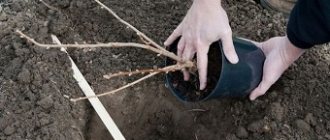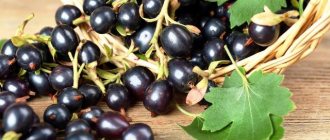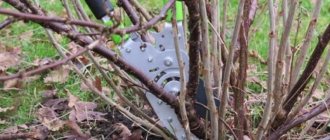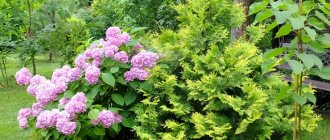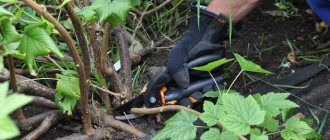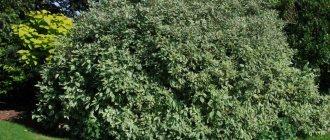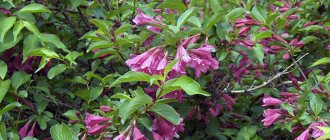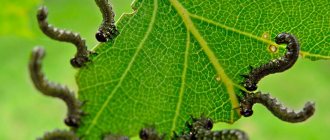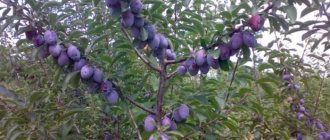Peculiarities of red currant propagation
To harvest a rich harvest of red currants, various factors should be taken into account, including the rules for propagating this crop. The most important thing is to correctly prepare the necessary planting material, i.e. cuttings.
After cutting the shoots from the bush, they need to be rooted, usually for this they should be placed in a container with water. For planting, an area that is well lit by the sun and in which there is no underground water is best suited.
It is also important to prepare the soil before planting. To do this, you must first dig a trench, add fertilizer, ash and humus, water the soil well, and only then begin planting.
Important! You should not propagate red currants by seeds, since in this case the varietal characteristics of the plant are not preserved.
in spring
Preparations for spring cuttings begin in the fall. To do this, you need to cut healthy shoots 25 cm long. You should tear off the leaves on the cuttings, and also cover the cut ends of the shoots with garden varnish. Each of the future seedlings must have at least 6 buds.
You need to store such shoots in the refrigerator until spring arrives, or you can also keep them in the yard, covered with a thick layer of snow. When the snow melts and the ground has time to warm up, you can begin planting work. First of all, you need to fertilize the soil, and the lower ends of the shoots should be cut off again and placed in water; you can also treat them with a growth stimulator.
The distance between the branches is 20 cm. When planting, you need to remember that there should be 4 buds underground. Rooted cuttings should be planted in a hole or trench not straight, but at an angle.
After planting, the soil should be compacted and watered. As soon as a green shoot 5 cm long grows, it should be transplanted to a permanent place.
in autumn
Autumn is a very favorable period for propagating red currants by cuttings. The survival rate of cuttings prepared for autumn planting is 90%. By the beginning of winter, such seedlings are already strengthened and tolerate winter frosts well.
We recommend reading how to properly plant currants in the fall, timing, preparation.
The result is a healthy and strong young plant in the spring that can produce a harvest in the first year. However, the danger of cuttings freezing still exists. Shoots for autumn propagation need to be harvested at the end of August so that they have time to get stronger and take root before the arrival of winter.
It is best to cut them from a healthy 3-5 year old bush, and the cuttings themselves should have a thickness of 6 mm. There may be several buds on a shoot, or there may be only one, although with such a minimum number the survival rate of seedlings is somewhat reduced.
Video: Propagation of red currants in autumn by cuttings
Cuttings in winter
Winter cuttings begin at home in December. You should choose one-year-old shoots with developed buds. Cuts should be made close to the ground. The length of the cut shoots is about 20 cm. The cuttings should be placed in a container with water, where it is advisable to add a little sugar or honey, and placed on the windowsill, where it is warm.
As a rule, small roots form within 25–30 days. As soon as they grow to 5 cm, the shoots should be planted in pots. Expanded clay or half-rotted leaves should be poured into the bottom of the containers. After planting, the soil should be watered with a weak solution of cow dung as fertilizer.
It is also worth placing pots with planted cuttings in boxes with foam on the bottom to preserve heat. Seedlings need to be watered regularly. Already in February the buds will begin to swell, and in May you will get a good seedling with green leaves.
Did you know? Red currant juice remarkably whitens the skin, discolors freckles and even age spots, so this berry makes excellent cosmetic masks.
Storing woody autumn cuttings
It is not recommended to plant chibuki harvested in the fall in the ground; it is better to dig them in and cover them for the winter. Planting material is kept in the basement, cellar, or other cold place until spring. The sections are treated with liquid paraffin or wax, the branches are stored in plastic packaging.
It is advisable to plant autumn cuttings in a substrate containing equal parts of soil, peat and sand. The cuttings are dropped to two-thirds of the length, tilted 45°. The soil around the seedling is compacted and watered. Maintain the air temperature at least 20°C and spray daily. In spring, rooted plants are planted in their intended place.
Reproduction methods
There are several ways to obtain good young currant bushes using cuttings. All of them allow the gardener to get the number of seedlings that he needs.
Woody cuttings
As a rule, woody cuttings begin to be prepared in mid-August.
It all happens as follows:
- You should take fruitful shoots without damage, 6–8 mm thick.
- Leaves from the branches need to be removed and each shoot divided into parts, leaving 5-6 buds on each.
- Make the cut straight at the top so that the shoot is formed correctly. And under the lower bud, make an oblique cut - this will later allow the young roots to better absorb water.
- Place the cuttings in water.
- As soon as the roots appear, the currants can begin to be planted.
Green cuttings
This cutting method is also quite popular and even novice gardeners can do it:
- As soon as the young shoots grow (usually at the end of May), their tops should be cut off to a length of 10–15 cm.
- Leave only the top leaves and remove the bottom ones.
- The branch must be treated with a growth stimulator for 12–24 hours.
- Prepare a place in the greenhouse and plant cuttings there.
- It is necessary to maintain humidity in the greenhouse and regularly spray the branches. It is also worth protecting them from direct sunlight.
- Rooting occurs in 2–3 weeks. It is very important to feed the shoots with nitrogen fertilizers during this period.
- In the fall you can start planting - these are the most optimal conditions.
By layering
This method must be used in early spring, even before the buds open. The most important thing in this type of propagation is that layering does not need to be separated from the main plant, unlike cuttings, so it does not experience any lack of moisture or nutrients.
Important! To propagate red currants by layering, only one-year-old and developed shoots should be used without any branches.
Step-by-step instruction:
- It is good to loosen the soil near the bush and then apply fertilizer. Due to this, moisture will be retained in the ground, and a crust will not appear on the surface.
- Dig grooves along the radius of the tree trunk to a depth of 10–15 cm.
- Bend the shoots selected for layering, place them in grooves and attach them to the ground.
- Gently sprinkle the cuttings with soil and leave only the top on the surface.
- Throughout the summer, the plant should be watered and hilled.
- In autumn, separate the cuttings from the bush. This produces ready-made seedlings that can be planted.
Reproduction by dividing the bush
In late autumn, at the end of the growing season, or in early spring, you can also use the method of dividing the bush. If you need to quickly plant a plant, you can immediately divide it into parts and get seedlings ready for planting.
Rules for plant propagation by dividing the bush:
- For planting, choose a well-lit place that is protected from drafts.
- Prepare holes 60–80 cm deep. They should be filled with humus and ash and be sure to water.
- Carefully dig up the original bush so as not to damage the roots.
- Old branches should be removed, and annual branches should be shortened to 25–40 cm.
- Divide the bush with a shovel or knife into several parts, depending on its size.
- Plant the cuttings 5–7 cm deeper than the mother plant grew.
New bushes need to be watered until they are completely established. Next year it will be possible to get the first harvest.
Currant pruning
Pruning currants in spring
Currant pruning is necessary so that the plant can bear fruit to its full potential, without wasting energy and nutrition on unnecessary and weak shoots. A larger number of berries are formed on last year's growths of four to five year old branches. Therefore, a currant branch that is more than six years old is a burden for the plant and must be removed. It is also necessary to rid the bush of branches that are dried out and affected by pests or diseases. If you remove unnecessary shoots in time, your currant, if it is black, can bear fruit for up to twenty years, and if it is red, then for fifteen years.
When and how to prune currants? The main pruning is carried out in the fall, after the leaves have fallen, and in the spring, before the buds open, shoots that have frozen over the winter are shortened to healthy tissue, and broken and dead branches are cut out. In summer, you can pinch the ends of young shoots to stimulate their tillering and give the bush the correct shape.
Pruning currants in autumn
For currants in the first year of growth, if you remember, during planting, all shoots are cut off at a height of 10-15 cm from ground level. Bushes of the second year of life are freed from zero shoots, leaving only 3-5 of the strongest of them, which will become skeletal branches in the future. On currant bushes of the third and fourth year, zero shoots are cut out, leaving 3-6 of the most developed ones. Do not allow the bushes to thicken; cut out underdeveloped and weak shoots from the middle of the bush. The tops of last year's shoots are trimmed.
The branches of the second and third years are pruned, leaving two to four buds on each branch. By this age, with proper and timely pruning, the bush is completely formed. At the next stage, branches older than six years appear, which should be cut at the root. All other branches are cut according to the described scheme.
Pruning red and white currants
Red and white currants are pruned in the spring. The principle and pattern of pruning are the same as for black currants, but the tops of the growths are not pinched, and the shoots of the second and third years are not shortened. Simply remove branches older than seven years (for these types of currants, these are considered old), cut out unnecessary new shoots, broken or diseased branches. If the old branch is still producing fruit, cut it back to the nearest strong fork. This will extend its life and fruiting period.
Principles of rooting cuttings at home
The main advantage of cuttings is that during the growing season you can easily obtain the required number of young bushes. Due to the fact that plants do not need to be dug out of the ground for transplantation, the roots of the seedlings are not damaged. The survival rate with this type of reproduction is very high.
Preparations for cuttings begin in early August. This is due to the fact that the movement of sap slows down towards the onset of autumn, so moisture is retained in the cuttings and they take root very well. If cuttings are harvested later, their subsequent rooting will slow down.
Did you know? Red currants contain strong phytoncides that can kill a number of viruses, including the influenza virus.
Rules for cutting blanks
Cutting blanks is carried out only on those branches that have already completed their growth and are in the resting phase. You need to choose strong and fairly thick shoots. The blanks must have at least 4 buds. The length of the cut shank should be at least 15 cm, and the thickness - 0.5 cm. The cuts should be made even, at an angle of 20°, 1 cm below the bud. It is better not to use pruners, but to use a well-sharpened knife.
Cuttings in spring and autumn
In autumn, propagation of black currants by cuttings can be combined with pruning; in this case, cuttings can be conveniently cut from cut-out extra 1- and 2-year-old shoots, which still thicken the bush. Their thickness should not be less than 8-10 mm. Pieces cut from shoots in the fall are not rooted, but sent to a cold place for storage. To do this, they are dipped in liquid paraffin or melted wax, after drying, they are wrapped in perforated film and placed in a cellar or refrigerator.
We recommend reading
Step-by-step instructions for planting currants in spring and autumn
Instructions for transplanting currants in spring and autumn to a new place
Rules for planting red currants in spring and autumn
Technology for pruning currants in autumn, tips for beginners
When propagating black currants by cuttings in the spring, they are immediately sent for rooting. Use 0.5 liter cups and fill them with a mixture of sand, peat, garden soil, taken 1:1:1. First, the cuttings are kept in a solution of any root growth stimulator, for example, Kornevin. When planting, the lower ends of the cuttings are buried so that only 2-3 buds remain at the top, watered with warm water and the soil is slightly compacted. The temperature for rooting is sufficiently room temperature, the humidity needs to be increased, this is done by spraying the cuttings every day with a spray bottle. If flowers appear on them, they must be torn off. Planting currant cuttings in the garden in the spring can be done after the danger of frost has passed.
Another method of rooting is without using cups, that is, planting directly into the ground. To do this, make small beds, plant cuttings in rows at a distance of 0.15 m, in row spacing a little more - 0.2 m. Before planting, if the cuttings have been treated with paraffin, then their lower ends are cut off at an oblique. Planted at an angle of 45°, leaving 2 buds above the ground. Water and mulch the top with peat, humus, and sawdust. Arcs are placed above the cuttings at a height of 0.5 m and covered with film. When new leaves appear, the shelter can be removed. Watering is moderate.
Preparing the soil before planting
It is possible to grow good currants only in well-prepared soil. The holes need to be dug 2-3 weeks before planting - this will allow the soil to settle, in addition, all harmful substances will come out of the soil. As a rule, holes are made to a depth of 40–50 cm and a width of 60 cm.
The top layer of dug soil must be mixed with fertilizer and placed at the bottom of the hole. Gardeners often use compost mixed with ash and superphosphate. If the soil itself is acidic, then you must add ground limestone (about 100 g) to the hole. You should not use nitrogen fertilizers to prepare the soil.
Pros and cons of autumn propagation of currants by cuttings in the fall
There are two types of bush propagation: cuttings and layering. The first method has many advantages. These include:
- Currant cuttings allow you to obtain an almost unlimited amount of material from the bush.
- The new bush retains all the qualities and characteristics that the mother plant had. Plus, you can choose the best shoots that give a good harvest.
- The resulting planting material can be planted immediately into the future growth site (school) under suitable conditions.
- The technology for growing currants using cuttings is much simpler than using seeds and cuttings. This does not damage the root system of an adult plant.
- In autumn, sap flow slows down, so seedlings have a better chance of surviving the winter. They take root easier.
- In autumn, moisture loss decreases, and in spring intensive development of the root system begins.
- High resistance to aggressive environments is formed.
The disadvantage of planting by cuttings is that it is impossible to accurately predict the result and guarantee the survival of the planting material. When planted by layering, seedlings have a better chance of taking root.
Care after landing
Immediately after planting the red currant bushes, it is necessary to water it, and the hole must be mulched. Annual branches need to be shortened, leaving only 3–4 developed buds. In spring, the soil should definitely be dug up to a depth of 10–12 cm, and the same should be done in the fall. In the row-spacings, the digging depth should be 8–10 cm. In such conditions, currants will grow well.
Read more about the features of caring for red currants.
Fertilizer
In spring, red currants should be fertilized with nitrogen mineral fertilizer. In summer, it is better to mulch the soil with rich humus or cow manure. In autumn, phosphorus or potassium fertilizers are applied. It is also useful to apply wood ash under the bush in the fall, because it is rich in phosphorus and potassium.
Mineral fertilizers need to be applied in the following quantities: 70 g of ammonium nitrate, 50 g of potassium fertilizer, 80 g of superphosphates. All organic fertilizers should be diluted with water, with bird droppings in a ratio of 1:12 and cow manure in a ratio of 1:4. It is worth pouring 1.5 buckets of solution under 1 bush.
It is also recommended to feed the shrub during flowering.
Recommendations for propagation by green cuttings
Using this method, it is important to follow some rules and recommendations:
- It is not advisable to prune the bush on dry, hot days. It is best to take cuttings in wet, rainy weather or early in the morning, when the air temperature is still quite low.
- It is recommended to plant cuttings in open ground, in a permanent place of growth, next year - this will allow the plant to better form and develop.
- Young plants can be covered with transparent jars or plastic bottles to maintain moisture. In addition, seedlings should be protected from direct sunlight.
Green cuttings for propagating red currants should be cut and placed in a greenhouse in June, when shoot growth is most active.
